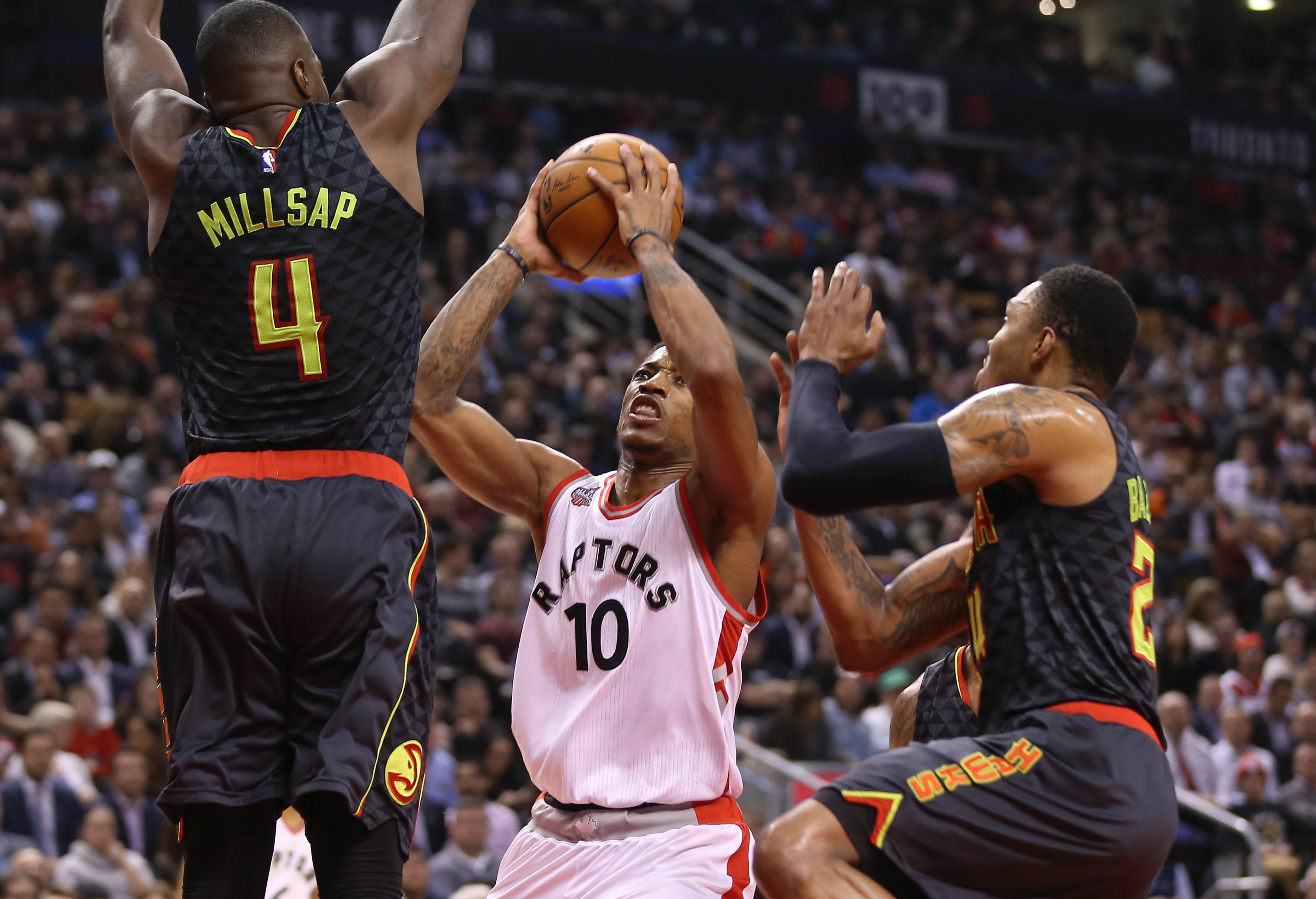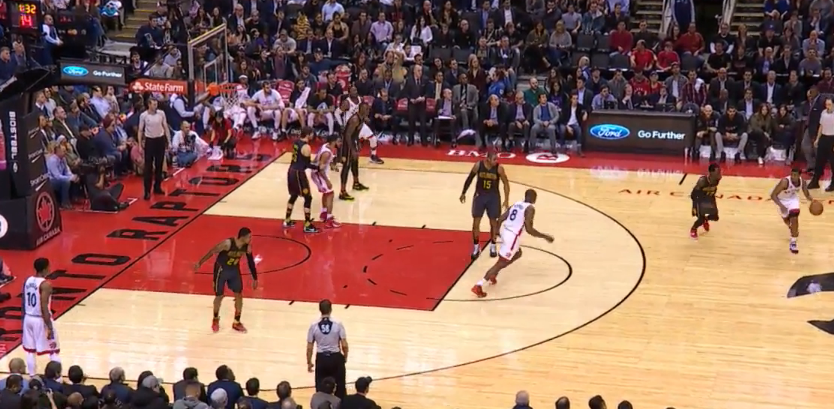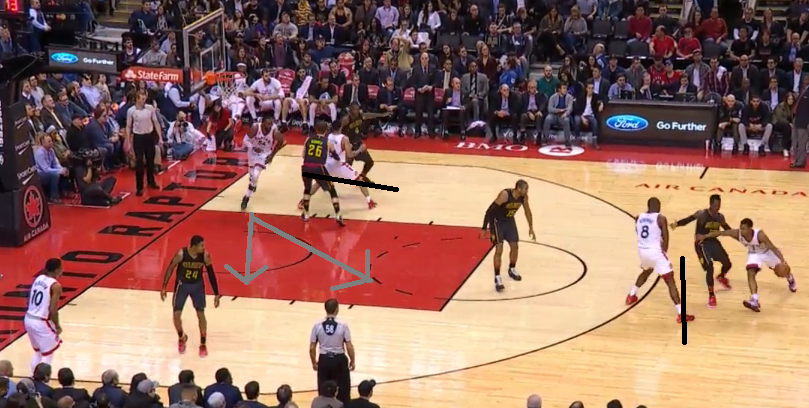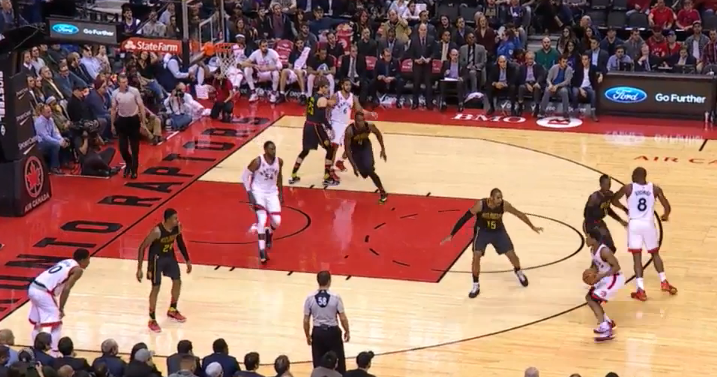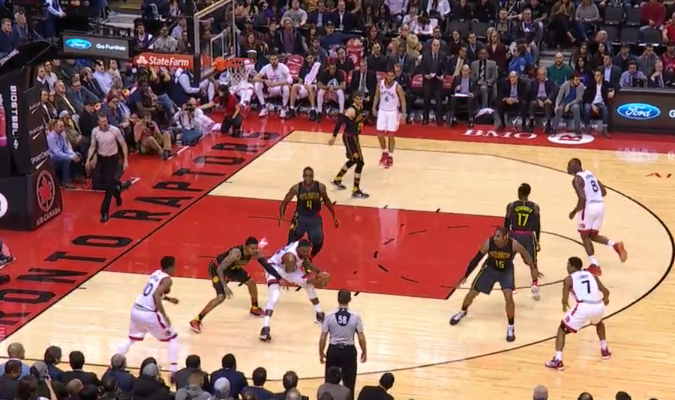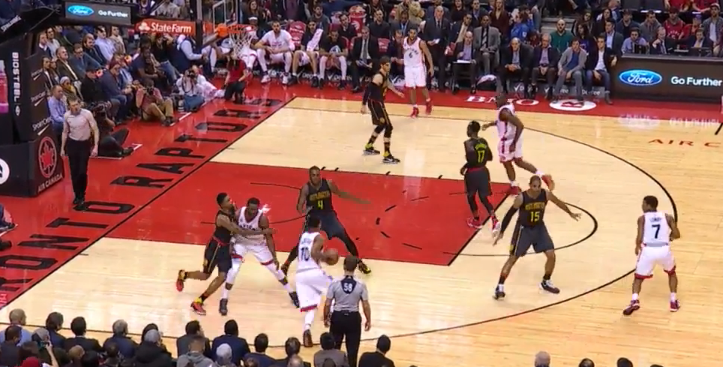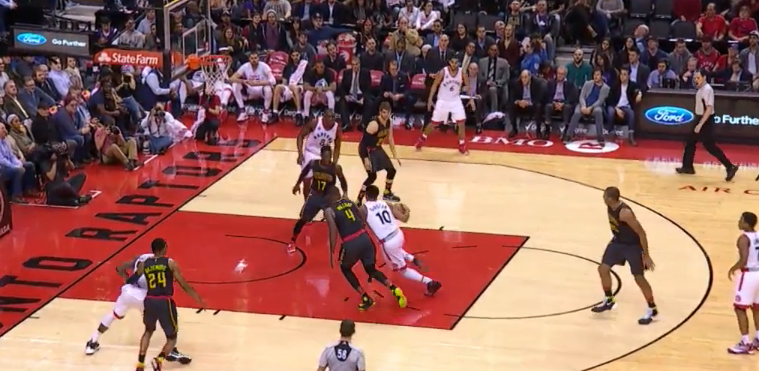The narrative that Toronto Raptors head coach Dwane Casey doesn’t call actual plays down the stretch and instead relies on clear-out isolation ball should have been put to rest long ago.
It hasn’t been, even though the Raptors rank 11th in the NBA in effective field-goal percentage off of deadballs, and that doesn’t include the value of trips to the free-throw line, Toronto’s biggest strength. We don’t have recent data, but earlier in the year, the Raptors also had a top-ten offense coming out of timeouts. The Raptors end possessions with isolations 8.6 percent of the time, sure, but that only ranks seventh in the NBA, and it’s a personnel-based shot distribution – DeMar DeRozan is in the 69th percentile for scoring on those plays this year, Cory Joseph is a shade higher in the 71st, and Kyle Lowry is in the 59th.
The team’s reliance on iso-ball is overstated, and just because Lowry or DeRozan attacks a defender to try to get to the rim doesn’t mean the play-call was an isolation. The Raptors want the end result of one of those two attacking, because both players rank in the top-40 in the NBA in free-throw rate and excel driving to the rim, something DeRozan does more than any other player in basketball. It may not always be the prettiest, but it’s what the Raptors are very, very good at.
And Casey has grown a lot in terms of creative play-calls to get his backcourt stars in positions to succeed. DeRozan spends his games running around an endless array of screens in order to secure a mismatch or get the ball on the move in space, and he covers more distance on the offensive end per-game than all but five other players in the league. They do this to get him away from top defenders, and to put him in spots that are impossible for opposing defenses.
Casey did exactly that at a key juncture in the team’s win against the Atlanta Hawks on Thursday night.
Leading 101-94 with 1:42 remaining, Casey called a full timeout to make call a play. To that point, the Hawks had proven mostly incapable of keeping DeRozan away from the restricted area. He was 11-of-20 overall, and while he’d only taken five free-throw attempts, he’d managed 27 points in a pretty efficient manner. The trade-off of the Hawks, one of the league’s most stingy teams when it comes to sending opponents to the line, trying to keep DeRozan off the stripe was that DeRozan was able to get into the teeth of the defense for his usual diet of difficult finishes.
Looking to force the Hawks into a difficult switching decision and really test their help defense, Casey went to a pet ATO (after timeout) play he loves, a Post HO (hand-off). Here’s the whole thing:
[gfy]ChubbyEnragedAmericanbadger[/gfy]
Even just the inbound from under their own basket is creative to beat a heavy press, with Joseph cutting to create space for Lowry to receive the inbound. Bismack Biyombo also sets a screen in the backcourt to help Lowry deal with pressure from Dennis Schroder. Once the ball’s in the halfcourt, here’s how the Raptors lineup:
As Biyombo moves from the elbow to set a ball-screen for Lowry, Patrick Patterson cuts from what will become the weak-side corner, using a Joseph screen.
Al Horford has dropped back despite the threat of Lowry pulling up for a three, in part because the Hawks they probably doubt the Raptors would want to heave a three with the lead and 13 seconds still on the clock. Horford’s likely aware that Patterson is coming, and by staying back, he can get in the passing lane if Lowry looked to feed Patterson under the bucket. Instead, Patterson has the option to continue his route up to the elbow, where he could set a second screen for Lowry and force Paul Millsap into a help scenario, or to the left block.
Patterson opts for the latter while Millsap scrambles to recover, and Lowry picks up his dribble with room to shoot.
Lowry feeds Patterson, who’s come out into the mid-range, and DeRozan’s man, Kent Bazemore, shades over to disrupt the pass while Millsap comes high. Biyombo begins showing dive to the rim, with Schroder and Horford having opted against switching back to their initial assignments (this comes into play later).
On some occasions, Patterson will take a dribble (to perform a DHO, or dribble hand-off), but in this case, space is tight, and DeRozan takes a straight hand-off. Patterson obliterates Bazemore with a screen as he hands the ball off, and DeRozan has a mismatch against Millsap, a quality defender but one who just got to that spot after fighting around a screen on the other side of the floor, and now has to quickly shift his momentum into back-pedaling against DeRozan.
DeRozan makes things even tougher for Millsap by coming high before he attacks, and Schroder provides essentially no help (remember when he and Horford opted not to switch back?). If Schroder did help aggressively, DeRozan would have Biyombo as a lob option, and since Korver’s come down to help the helper, DeRozan also has a Joseph kick-out available with nine seconds still on the clock.
He doesn’t need either option, though, as he has Millsap beat and the All-Star forward offers only a hack at the ball, sending DeRozan to the stripe to split a pair.
Again, here’s the relevant action:
[gfy]GleamingThickFugu[/gfy]
That put the Raptors ahead 102-94 with 84 seconds to play, and they closed out thanks to Lowry drawing a huge charge a few possessions later and the Hawks turning the ball over with poor execution of a well-designed ATO from Mike Budenholzer on their final play.
As a refresher, this is a pet play of Casey’s, one he’s used often to get DeRozan good looks in space. Here, Jonas Valanciunas hands the ball off and uses his frame to give DeRozan a reprieve from the smothering defense of Justise Winslow, enough to let a three off.
Sometimes teams are so beat by it they don’t even offer much resistance once DeRozan turns the corner.
When the Raptors roll with two point guards, the team will sometimes run DeRozan’s plays for Lowry, and Lowry’s the recipient of these hand-offs instead of the one starting the play.
Lowry might be even tougher to guard in these scenarios depending on the opponent, as he’s such a threat to pull up over a screen that his man really has to tight over top to stay with him, giving him an extra edge once he chooses to drive.
And for teams who have this scouted, well, the Raptors have a counter, too. Here, Minnesota snuffs out the Valanciunas cut by fronting the post-entry. So Valanciunas draws Gorgui Dieng high, slips the screen, and then winds up wide open underneath the basket when Dieng’s help has to close out on a shooter.
All of these different variations come from a pretty similar base action, which makes “Raptors Post (D)HO” far more difficult to gameplan for than “stop DeRozan one-on-one.”
With files from Raptors Republic contributor Cooper Smither.

